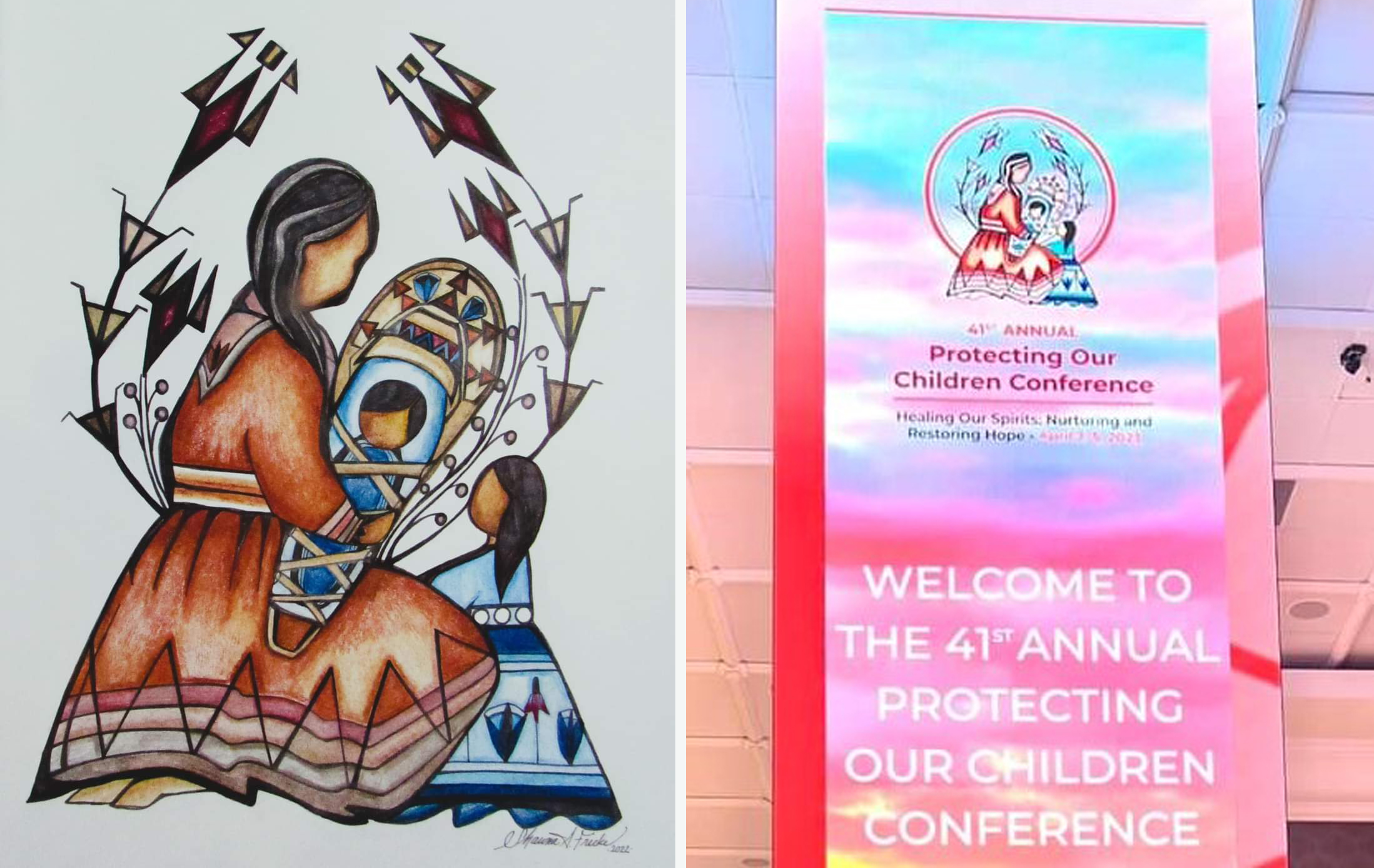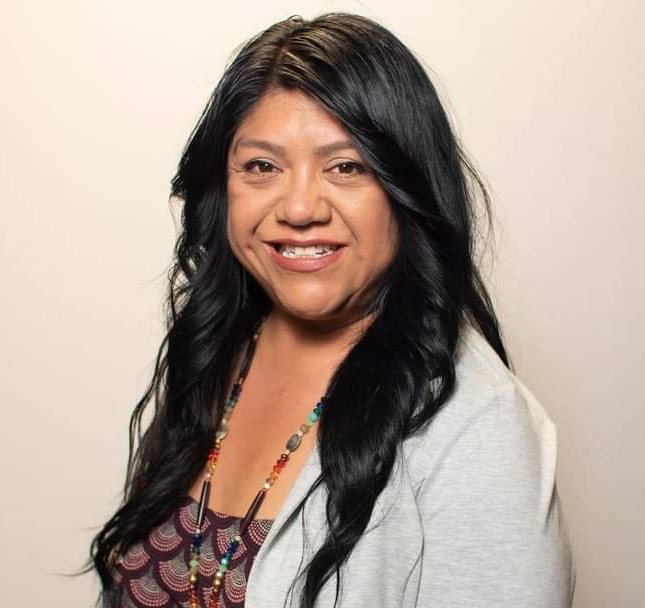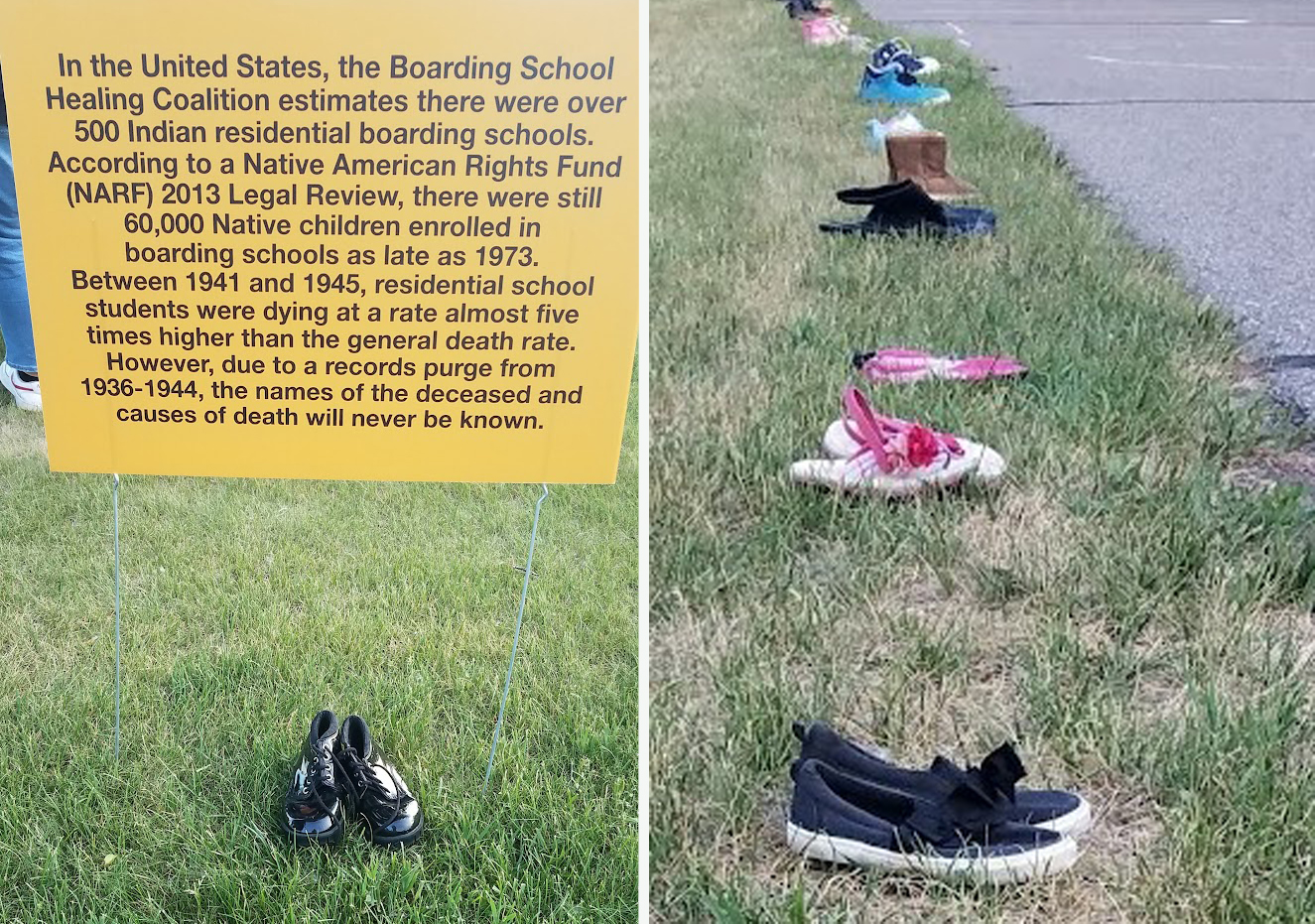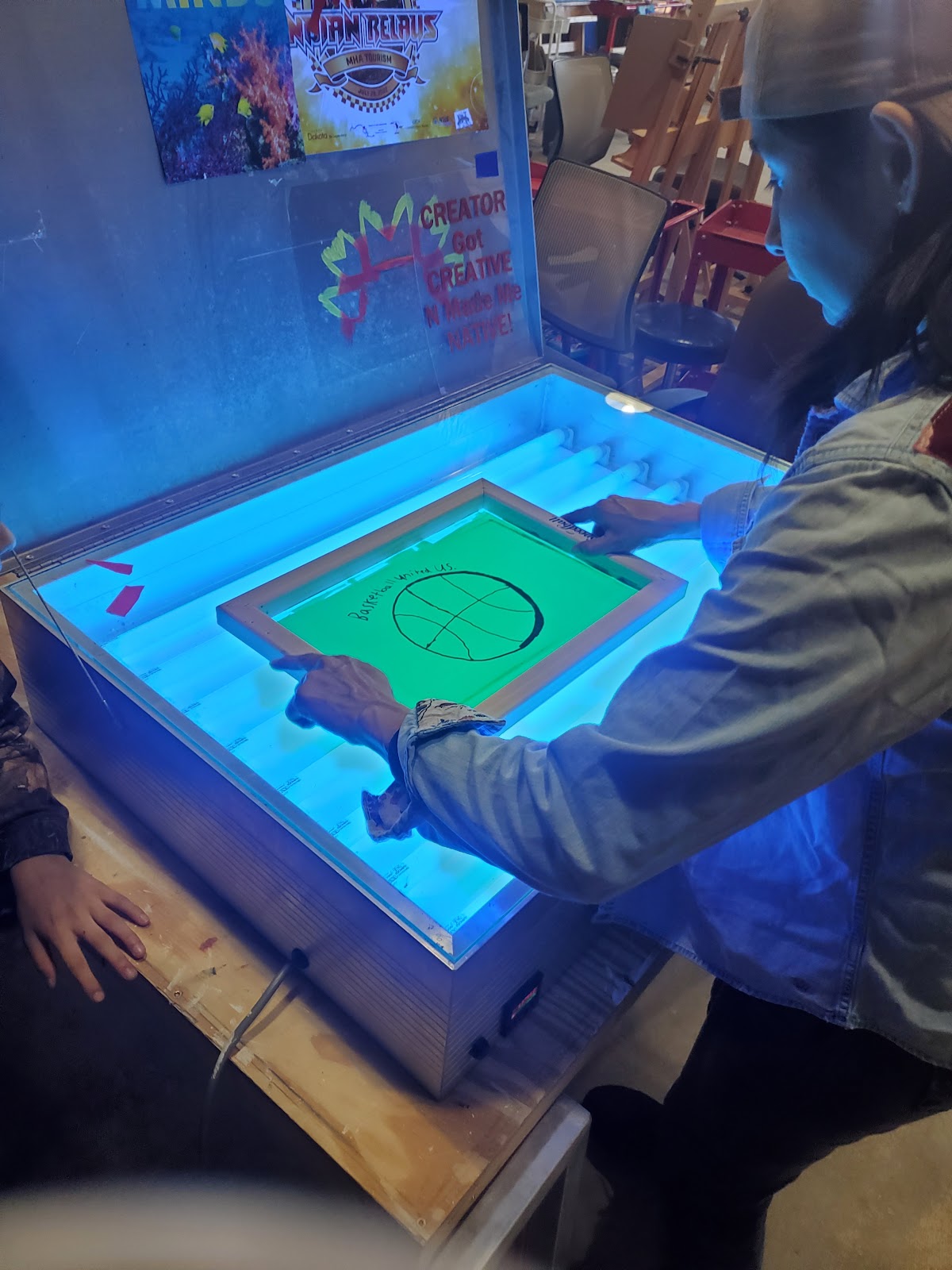Nestled along the banks of the Missouri River, the communities of Bismarck and Mandan, North Dakota, bear witness to a complex tapestry of history, culture, and resilience. The cities are only 45 miles north of the Standing Rock Nation, where water protectors defending the Missouri River against the Dakota Access Pipeline were injured and traumatized by local law enforcement, the National Guard and private security forces in 2016.

Many citizens of Standing Rock call Bismarck and Mandan home. So do citizens of other tribal nations located within North Dakota like the Mandan, Hidatsa and Arikara Nation (MHA Nation), the Turtle Mountain Band of Chippewa, the Spirit Lake Nation and the Sisseton Wahpeton Oyate.
On Main Street in Mandan, you’ll find the Sacred Pipe Resource Center. This non-profit organization serves as a safe space for “urban Indians” to exchange problem solving ideas and friendship in a welcoming setting. The organization provides critical data, outreach and cultural brokering needs, and partners with organizations already providing similar services.
Recently, Sacred Pipe Resource Center embarked on an exciting new creative endeavor. It is one of three Midwestern organizations currently taking part in We the Many, a community-focused artist-in-residency program. Through this initiative, the center hopes to amplify the voices of Native artists, address community needs, and act as a catalyst for social change.
Throughout the summer, Native artists will be leading creative activities that encourage skill-building and bring visibility to community needs. Workshops spanning t-shirt printing, flower arranging, ceramics, and more, empower participants to explore their artistic potential, nurture their talents, and authentically express themselves.
Shawna Fricke, We the Many Artist-In-Residence“Artists can use their work to raise awareness about important issues and spark conversation and action, to document and preserve history, culture, and stories.”

An Artist-in-Residence Supporting Local Creativity
In 2022, Shawna Fricke (Piaute, Taos/Pueblo), owner of Moo Ku Vu, was selected as Sacred Pipe Resource Center’s first artist-in-residence. Shawna is a local artist with an Associates in Fine Arts degree in two and three-dimensional art from the Institute of American Indian Arts (IAIA). She specializes in acrylic and mixed media inspired by her culture.

Fricke says that art plays a role in social justice education, community building, and social activism and social movements. “Artists can use their work to raise awareness about important issues and spark conversation and action, to document and preserve history, culture, and stories,” she says.
As a We the Many artist-in-residence, she is helping creative people in her community, especially indigenous youth and their families, to learn how to become better artists and future entrepreneurs, and how to preserve cultural knowledge and traditions while emphasizing the importance of family.
The artist is currently running a series of workshops through the end of the summer that focus on wearable and room art, floral arranging, ceramics, painting and more. Each session is a safe space where participants learn about their own potential as creatives, build on their existing talents and learn to be confident with self-expression.
Besides developing, implementing and co-facilitating ‘We the Many’ artistic workshops, Fricke still finds time to travel to sell her work at vendor shows and artist collaborations in the region. Her artwork was recently featured at the National Indian Child Welfare Association in Reno, Nevada, in early April 2023.
She is also one of the founding members of Native Artists United, whose mission is to support Indigenous artists and small businesses. She believes it’s important to buy directly from local Indigenous artists.
“Artists take pride and want to make their community proud. Their work is deeply personal to them and they want to make sure it matters. Local art also gives you an opportunity to meet the artist and learn to appreciate and respect the artist’s background and story,” says Fricke.
The US Department of the Interior Secretary Deb Haaland is currently working to strengthen current regulations of the Indian Arts and Crafts Act to further protect the authenticity of such local artists.
Rochelle Wells, We the Many Workshop Facilitator“I like being able to help plant a seed. These youth are finding out for themselves how creative they are, and I’m excited to be a part of that.”

Spotlighting Creative Practitioners
At workshops, Fricke is joined by talented facilitators like Rochelle Wells (MHA Nation), who designs and prints t-shirts. Wells started making designs in 2008 using various mediums including fabric paint, screen-printing, spray paint, direct-to-garment, transfers and tie-dyes. She says at the time she never would have thought this form of expression would grow into what it has over the years.
In addition to being a commissioned artist, Wells is also a girls basketball coach. She invited her team to participate in a recent wearable art workshop. While she says sports are important for teaching discipline and unity, her workshop highlights individualization and unity.
“I like being able to help plant a seed. I like seeing the process of putting an idea that’s in your head, into something you can wear,” says Wells. “These youth are finding out for themselves how creative they are, and I’m excited to be a part of that. It’s great to see them come together in this way.”
Lisa Kraft (Standing Rock), owner of Cactus Rose Floral in Selfridge, North Dakota will be leading a workshop on floral arranging. Kraft says she has always had a passion for flowers, but it wasn’t until 2016 that she fell in love with creating flowers and floral arrangements. She says her inspiration is her daughters. “Without them I wouldn’t be on the journey I’m on.”

Her goal for her workshop is to help bring awareness about social justice issues and to create beautiful memorial arrangements for Memorial Day. “Flowers silently assure us that beauty and solace exist despite loss or injustice,” she quotes from the Flower Power Daily website. “They are the weapons of choice to disarm violence. They add a peaceful voice to anguish; their beauty is a symbol of hope.”
Other workshops in the series include painting a mural in the alley behind the Sacred Pipe Resource Center building, and hosting ceramics classes where the focus will be on making smudge bowls and making ornaments honoring Missing and Murdered Indigenous Women, Girls and Two-Spirit People.
These opportunities are important for Native artists, says Sacred Pipe Resource Center’s Executive Director Dr. Cheryl Kary. “When the community sees more cultural expression coming from the Indigenous community, these artists will have opportunities embedded in the community and systems so [the opportunities] don’t end when the grant ends,” she says.
Dr. Cheryl Kary, Executive Director of Sacred Pipe Resource Center“Featuring Native art is a catalyst for talking about Native issues, challenges, inequities, and things that need to change in our community.”
Art as a Catalyst for Change
Sacred Pipe Resource Center hosts several community councils that have been created to address local inequities and injustices. Volunteers meet on a regular basis to discuss how to solve the community’s issues on housing and homelessness, juvenile justice and law enforcement, civic engagement programs, and health and wellness concerns.
Recently added to the list of Sacred Pipe Resource Center’s community councils was an art council. Dr. Kary says that more artists are showing up in these spaces eager to learn how to become successful artists in this mostly non-Indigenous community. The art council is hearing the voices of local artists, like artist-in-residence Shawna Fricke and others, to help develop Indigenous visibility platforms by building capacity and networking while addressing community needs.
“More and more Native artists are using their art as healing and self-expression, but we want to bring in the social justice element more strongly,” says Dr. Kary. “Featuring Native art is a catalyst for talking about Native issues, challenges, inequities, and things that need to change in our community.

Dr. Kary shares an example of empowering voices in a project Sacred Pipe Resource Center helped to sponsor in 2021. “After the first mass graves were found in Kamloops, BC we supported a pop-up art installation of a young woman from the community whose father attended a boarding school,” she says.
The artist wanted to support the families by setting up a display of children’s shoes and signs along a walking path across from the former Bismarck Indian School. The school, which operated from 1908 to 1937, is now the headquarters of North Dakota’s National Guard.
Sacred Pipe Resource Center funded the printing of signs that included quotes from survivors and a brief history of Native Boarding Schools in the U.S. They also reached out to the local Native community, asking for used children’s shoes to be used with the signs on the walking trail.
“It brought a lot of attention to the community,” says Dr. Kary. “Many who walked along the path asked us what happened, and their consciousness was raised.”
When these kinds of artistic expressions find fertile ground, creative endeavors can pave the way for positive change that resonates far beyond Mandan. “With [We the Many] and our artist-in-residence, we are working towards empowering our local Native artists to use their art as a catalyst to talk about community issues and raise consciousness,” she says.
The Sacred Pipe Resource Center is part of We the Many, a program that supports communities in the creation of their own unique artist residency experiences, encouraging the exchange of voices, cultures, and ideas relevant to each community context. We the Many is a project of Arts Midwest with generous support from the Mellon Foundation and in partnership with the North Dakota Council on the Arts.
